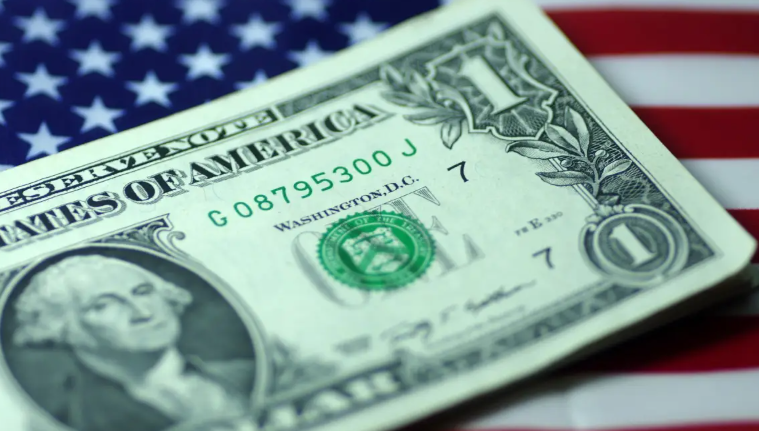Is the Dollar's Strength About to Revert?
Advertisements
In recent months, the strength of the U.S. dollar has stirred both optimism and skepticism among economists and traders alike. Supported by prevailing tariff policies, the dollar continues to show resilience in the global markets. However, there is an underlying concern that in the long run, these very tariffs might lead to a depreciation of the dollar, as outlined by recent analyses from Bank of America.
As they reported back on February 12, the initial round of impacts from the tariffs has provided a significant boost to the dollar's performance. But as retaliatory measures possibly emerge from other nations, there could be a counter-effect that weakens the dollar's position. This concern stems from the understanding that while the United States may be less dependent on exports than many other countries, its trade vulnerabilities become more pronounced when it confronts other nations in disputes.
The sentiments surrounding risk, monetary policies, and long-term economic forecasts collectively shape the dollar's trajectory. For example, recent sell-offs in the American stock market can adversely affect the dollar's value. Additionally, the Federal Reserve’s dovish stance towards interest rates further complicates matters, as it could lead to a decline in the dollar’s strength. If the underlying prospects for long-term growth in the economy begin to weaken, the same could surely result for the dollar.
The initial wave of impacts from tariffs has largely favored the dollar. At the beginning of this year, news of new tariffs was met with a positive response in the dollar's exchange rates. Initially, when the new administration announced it would not immediately impose tariffs, the dollar took a dip. But this changed dramatically when the prospect of 25% tariffs on imports from Canada and Mexico was introduced. The dollar once again experienced a wild ride, rising in value as tariffs on steel and aluminum imports were enforced and threats of further retaliatory tariffs echoed through the markets.
On February 1, the U.S. government officially declared a 25% tariff on goods imported from Canada and Mexico, along with a 10% tax on energy products sourced from Canada, with the tariffs due to take effect shortly thereafter. According to Bank of America’s assessment, this reaction aligns well with economic theory, which predicts that because the U.S. exports make up a relatively small portion of the GDP, the direct shock from trade disruptions would be limited. Thus, the market's initial response was a bullish one for the dollar.
However, this perspective didn’t fully consider the subsequent retaliatory measures other countries might undertake. Bank of America warns that when global trade confrontations escalate into larger disputes, the dollar's robust position could falter. The stark reality is that while the U.S. represents a major economic force, the overall scale of other countries in the global trade system is even larger. If high tariffs on imports from all sources are enacted and other nations respond with full-blown retaliation, then U.S. exports could face a significant tariff shock.

Countries such as Mexico and Canada, which heavily rely on exports to the U.S., would feel the repercussions. However, what is crucial to note is that a significant portion of U.S. GDP is now exposed to tariffs. In scenarios where trade tensions escalate, while the dollar might strengthen against currencies like the Mexican peso or Canadian dollar, it could just as likely weaken against other G10 currencies.
Moreover, Bank of America posits that, theoretically, markets should anticipate the second round impacts of retaliatory tariffs. Consequently, the dollar may not sustain its strength in the short term. What's more, the situation is further complicated by the fact that retaliatory responses by countries often take time to coordinate and implement. Additionally, certain nations might opt to devalue their own currencies to mitigate the impact of tariffs, further complicating the dynamics.
The potential decline of the dollar can be attributed to three main factors, as identified by analysts. First is the fading risk appetite and corrections within the U.S. stock market. Initially, during the escalation of tariff announcements, risk-averse behavior might bolster the dollar. However, the dollar's strength is inherently linked to the high valuations of U.S. stocks, particularly in technology sectors. If a significant market correction occurs, fear and uncertainty may arise, thereby diminishing the dollar's support.
Second is the predicted shift in Federal Reserve monetary policy. As tariffs and retaliatory measures impose potential stagflationary pressures on both the U.S. and the global economies, central banks worldwide will navigate the trade-off between growth and inflation. Given the potential political pressures the Federal Reserve may face, it remains uncertain whether it will adopt an aggressively hawkish stance. Additionally, the U.S's high deficit limits fiscal stimulus options, which could place more reliance on monetary policy. A more dovish Federal Reserve would likely result in a weakened dollar.
Lastly, the damaging effect of trade protectionism on long-term productivity stands to threaten the economic landscape. Should the U.S. escalate its tariffs against other nations while those countries retaliate, it is likely that all involved will face negative consequences. However, the U.S. could experience relatively more harm due to its higher levels of protectionism. Other countries may continue to engage in trade with one another, potentially lessening their own trading barriers in response to U.S. tariffs. The net result could threaten long-term productivity in the U.S. economy, challenging the notion of American exceptionalism and eroding the sustainability of the dollar's value.
Leave a Reply